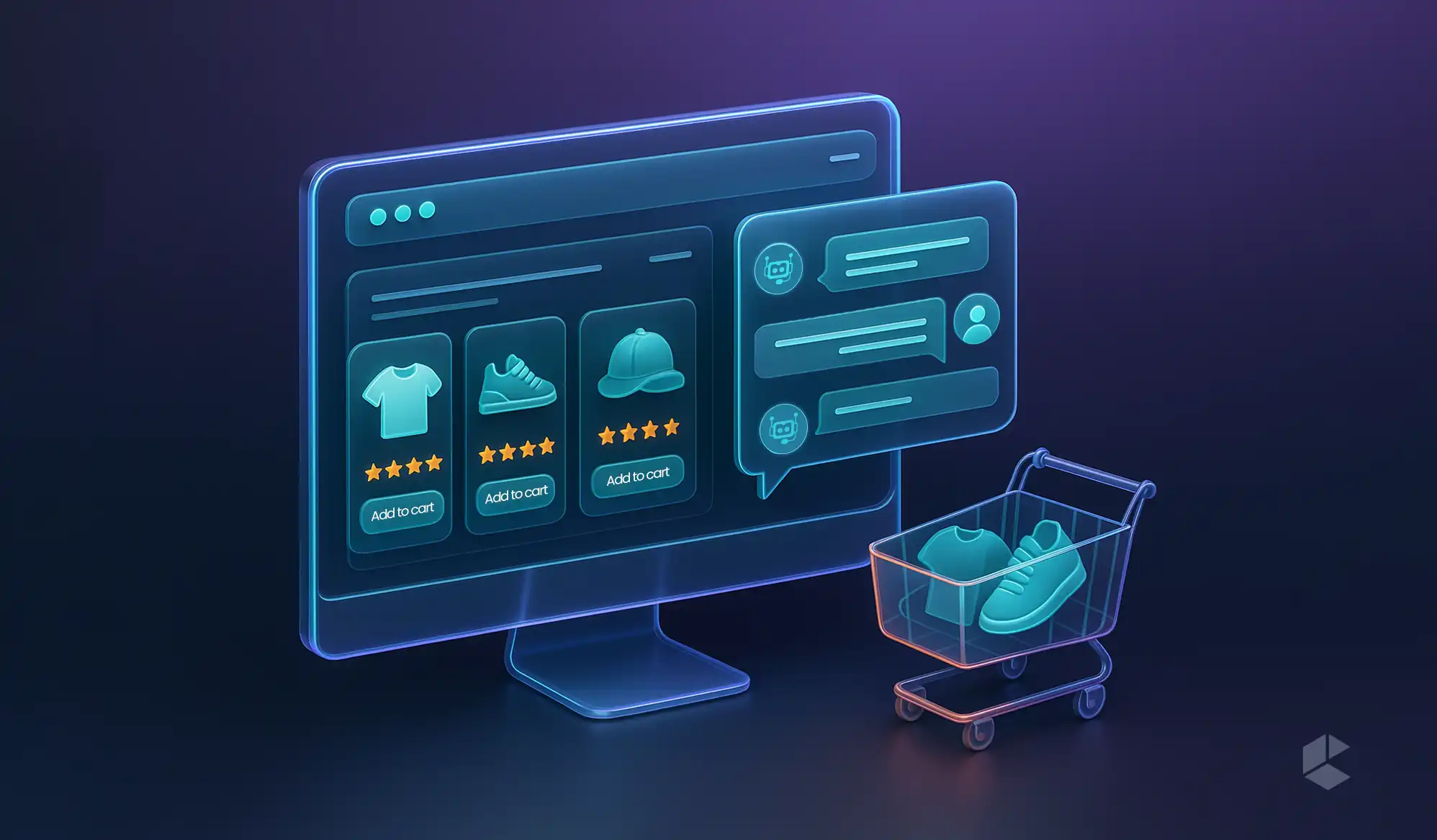- Growth marketing involves adopting multiple strategies to increase your sales.
- Unlike traditional marketing, growth marketing continuously tests and evolves its strategies based on real-time data.
- The AARRR framework breaks down customers’ journeys into five different stages, helping you identify what is working and what is not.
- Techniques like A/B testing, cross-channel marketing, and customer data analysis help you make data driven decisions.
- Growth marketing is a continuous approach that helps brands grow faster.
Imagine you have an eCommerce store or any other online business. You did everything you could to make your product the best. But do you think that is enough? Of course not! Customers need to know about your product first! right? Only then will they consider purchasing it. In this highly competitive world, how will you make sure that your product gets the attention that it deserves? That’s where you will need marketing! But not just any marketing! You need the right kind of marketing!
Basically, there are two ways in which you could market your product. One is the traditional marketing approach, and the other is called growth marketing. You can choose which one is right for you based on your goals. If you are a well established company and your motive is to build your brand image slowly over time, you can choose traditional marketing. It is marketing through billboards, TV ads, or print media. It works well for mass awareness, but it’s expensive, hard to measure, and slower to adapt. On the other hand, if you are a startup, digital-first brand, or fast-scaling business, then growth marketing would be your right choice. It is a data-driven approach focused on rapid experimentation across the entire customer journey, from acquisition to retention, to drive scalable business growth. Unlike traditional marketing, it constantly tests, learns, and optimizes to find the most effective ways to grow.
Here, in this blog, let’s discuss in more detail what growth marketing is and explore some useful tips and techniques to implement it successfully.
What is Growth Marketing?

Let’s understand with an example! You own an online store that sells jewelry. Let’s say you are promoting your brand using five small experiments instead of one big ad campaign. That is, instead of conducting a single large-scale marketing push, you try out different strategies like an Instagram ad, a TikTok influencer shoutout, a referral discount for existing customers, a personalized email campaign, and a limited-time offer on your website.
The benefit of marketing this way is that you can track which strategy brings the most traffic, which one converts better, and which customers come back for more. This will give you a better understanding of where to invest more and where to invest less. That’s growth marketing! In short, growth marketing is testing, learning, and scaling your success with smart, data-driven moves.
So, how do you apply growth marketing to your business?
How do you know where to experiment, what to measure, and how to grow?
That’s where the AARRR framework comes in. It maps out your entire customer journey.
What is the AARRR Framework?
AARRR, also known as Pirate Funnel, is a popular growth marketing framework that breaks down the customer’s journey into five key stages.
Acquisition – How do users find you?
Activation – Do they have a great first experience?
Retention – Are they coming back?
Referral – Are they telling others?
Revenue – Are they generating income for your business?
Analyzing each of these gives you an understanding of where your growth is coming from and where you’re losing potential. It helps you understand the drawbacks in your funnel and prioritize which areas to improve through targeted experiments.
For instance, imagine that you get a lot of visitors to your website, that is, good acquisition, but only a very few of them are signing up or making the first purchase. That shows poor activation.
Here is what you can do:
- Simplify your onboarding process
- Add a first-time user discount
- Improve your landing page copy and CTA
- Include testimonials or social proof to build trust
Experiments like this will improve your activation rate. You can adopt similar strategies for improving each stage of the AARRR funnel.
For example,
- To increase your acquisition rate, you can invest more in SEO, run targeted ads, etc.
- To improve your retention rate, you can try sending timely re-engagement emails, loyalty rewards, etc.
- To strengthen your referral rate, you can build a referral program with incentives.
- To grow revenue, try upselling, cross-selling, or improving your pricing strategy.
Now that you have understood what growth marketing is and how the AARRR framework helps map out your customer’s journey, let’s move on to some useful growth marketing tips and techniques.
Growth Marketing – Tips and Techniques
First of all, you should understand the fact that growth marketing is not just one trick or tool! It’s a combination of multiple techniques that work together across the full funnel to drive results. Below are some of the effective methods that most of the successful growth marketers follow. Let’s explore them one by one!
1. A/B testing
A/B testing, or in other words, split testing, is a method in which two versions of something, such as an email, ad, etc, are compared to determine which one performs better than the other. In this method, you show the first version to half of your audience and the second version to the other half of your audience. After that, you can track which version got you better results and then use that data to make informed decisions about your future campaigns.
For example, consider that you need to send a cart abandonment email to your audience. Here you can use the A/B method to test which subject line grabs more attention. Send an email with a subject line “Don’t miss out on the 50% off sale, only today” to the first half of the audience, and then send an email with a subject line “50% off sale, today’s offer, just for you” to the other half. The content of both emails is the same. There is a change only in the subject line. Once sent, you can track which one gets a higher open rate. The winning subject line can then be used as a reference for future emails to improve engagement.
In short, with A/B testing, you can increase conversions, reduce bounce rates, and ultimately make a profit by continuously testing and optimizing using real customer behaviour.
2. Cross-channel marketing
Cross-channel marketing is a strategy through which you connect with your customers via multiple platforms like social media, email, SEO, ads, and content in a consistent and coordinated way. However, it is important to understand that cross-channel marketing is not just about being on different channels! It’s about making sure that each channel supports and complements the other and thereby improves the overall customer journey.
Let’s understand how it works with a hypothetical situation. Imagine that you own an online shoe store. A customer visited your store after watching an ad on social media. In your store, they see an offer, 20% off for the first purchase. This triggers them to sign up and buy the product. Now, how will you understand which channel had the most impact on the customer’s decision to purchase? That’s where attribution models help you. It analyzes which channels or touchpoints contributed to the final conversion (in this case, the shoe purchase) and assigns credit accordingly.
By combining cross-channel marketing with the right attribution models, you can clearly see which strategies truly drive results.
3. Customer data analysis
By now, you might have understood that growth marketing is about smart decisions and not about mere guesses. The more you understand your customers, what they like, what they need, and how they behave, the better you can market to them.
This means:
- Tracking metrics (like website traffic, conversions, and repeat purchases).
- Listening to customer feedback.
- Using tools like Google Search Console or Shopify Analytics to see what’s working and what’s not.
In short, customer data analysis lets you make informed decisions, personalize your campaigns, and identify areas for improvement across the funnel.
Conclusion
Growth marketing is the continuous implementation of strategies that are driven by data, experimentation, and a deep understanding of your customers. Unlike traditional marketing, it’s not a one-time effort; instead, it is a continuous process of testing, learning, experimenting, implementing, and evolving. By applying frameworks like AARRR and techniques like A/B testing, cross-channel marketing, and data analysis, you’re growing your brand and building a business that listens, adapts, and evolves.
FAQs
Growth marketing is the continuous application of data-driven strategies that focus on the entire customer journey, from acquisition to retention and revenue. As opposed to traditional marketing, which often relies on fixed campaigns and broad messaging through channels like TV, print, or radio, growth marketing uses constant experimentation, real-time feedback, and digital tools to optimize results.
Popular tools include Google Analytics, Search Console, Shopify Analytics, A/B testing platforms (like Optimizely or VWO), email marketing tools (like Mailchimp or Klaviyo), and customer feedback tools (like Typeform or Hotjar).
Growth marketing is ideal for startups, digital-first brands, or fast-scaling businesses that need rapid experimentation across the entire customer journey, from acquisition to retention, to drive scalable business growth. However, even well-established companies can use growth marketing techniques to stay competitive.
No! Growth marketing focuses on the entire customer journey rather than being limited to just attracting new users. It involves acquiring customers, converting them into buyers, encouraging repeat purchases, and turning them into brand advocates through referrals. The goal isn’t just customer acquisition! It’s building sustainable, long-term business growth.
That completely depends on your goal. Traditional marketing is ideal for already established brands that are aiming for mass awareness through channels like TV, radio, etc. On the other hand, growth marketing is perfect for startups that need measurable, scalable results.









